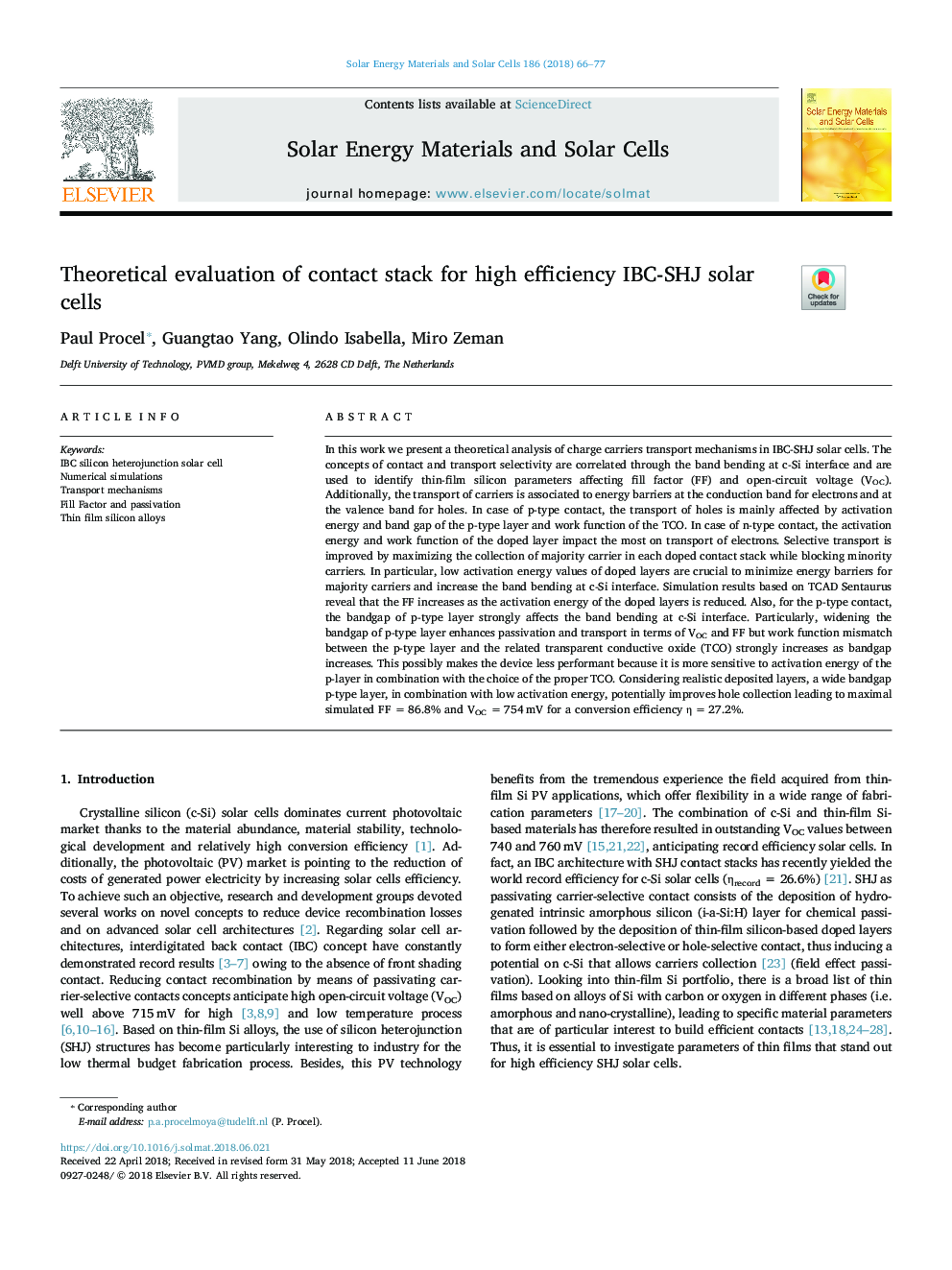| کد مقاله | کد نشریه | سال انتشار | مقاله انگلیسی | نسخه تمام متن |
|---|---|---|---|---|
| 6533878 | 1420637 | 2018 | 12 صفحه PDF | دانلود رایگان |
عنوان انگلیسی مقاله ISI
Theoretical evaluation of contact stack for high efficiency IBC-SHJ solar cells
دانلود مقاله + سفارش ترجمه
دانلود مقاله ISI انگلیسی
رایگان برای ایرانیان
موضوعات مرتبط
مهندسی و علوم پایه
مهندسی شیمی
کاتالیزور
پیش نمایش صفحه اول مقاله

چکیده انگلیسی
In this work we present a theoretical analysis of charge carriers transport mechanisms in IBC-SHJ solar cells. The concepts of contact and transport selectivity are correlated through the band bending at c-Si interface and are used to identify thin-film silicon parameters affecting fill factor (FF) and open-circuit voltage (VOC). Additionally, the transport of carriers is associated to energy barriers at the conduction band for electrons and at the valence band for holes. In case of p-type contact, the transport of holes is mainly affected by activation energy and band gap of the p-type layer and work function of the TCO. In case of n-type contact, the activation energy and work function of the doped layer impact the most on transport of electrons. Selective transport is improved by maximizing the collection of majority carrier in each doped contact stack while blocking minority carriers. In particular, low activation energy values of doped layers are crucial to minimize energy barriers for majority carriers and increase the band bending at c-Si interface. Simulation results based on TCAD Sentaurus reveal that the FF increases as the activation energy of the doped layers is reduced. Also, for the p-type contact, the bandgap of p-type layer strongly affects the band bending at c-Si interface. Particularly, widening the bandgap of p-type layer enhances passivation and transport in terms of VOC and FF but work function mismatch between the p-type layer and the related transparent conductive oxide (TCO) strongly increases as bandgap increases. This possibly makes the device less performant because it is more sensitive to activation energy of the p-layer in combination with the choice of the proper TCO. Considering realistic deposited layers, a wide bandgap p-type layer, in combination with low activation energy, potentially improves hole collection leading to maximal simulated FF =â¯86.8% and VOC =â¯754â¯mV for a conversion efficiency ηâ¯=â¯27.2%.
ناشر
Database: Elsevier - ScienceDirect (ساینس دایرکت)
Journal: Solar Energy Materials and Solar Cells - Volume 186, November 2018, Pages 66-77
Journal: Solar Energy Materials and Solar Cells - Volume 186, November 2018, Pages 66-77
نویسندگان
Paul Procel, Guangtao Yang, Olindo Isabella, Miro Zeman,